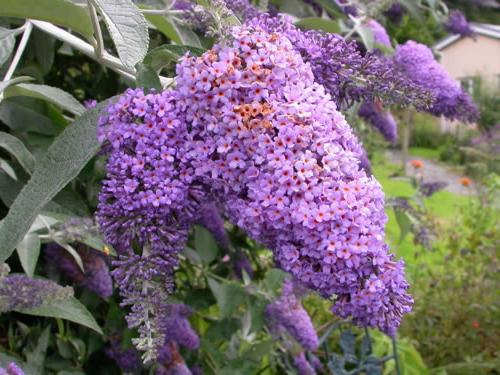Lilac Hungarian: planting and care
Lilac Hungarian is no less popular thanclassical ordinary. It is quite widespread in Russia and was recognized for its high decorative qualities, combined with extreme unpretentiousness: it grows everywhere, feeling well not only in the countryside, but also in the gassed air of megacities. In addition, this species is able to tolerate both with a clamor, and with a drought, both with shading and with forty-degree frosts. And the lilac Hungarian breeds quite simply. It can be successfully planted with both cuttings and seeds, and the stability of the crop allows preserving the species characteristics of the daughter plants.
Landing Location
It's easy to choose a place in the garden where it will pleaseits flowering Hungarian lilac. Planting can be done in a sufficiently lighted area, protected from strong winds. It is better to choose places not too low, with moderately moist, drained soil, which contains a high percentage of humus. If the groundwater in your garden is high, it is this type of lilac that will successfully replace the ordinary, which does not tolerate even a short-term flooding of the roots.
Landing
Lilac saplings are best suited, beingplanted from July 15 until early September. If to root them sooner or later, in the first year the lilac Hungarian practically will not give a gain, because it will take root. Between the bushes it is enough to leave a distance of two and a half meters.
The first step is the preparation of landing holes. They are digging with straight, sheer walls. Dimensions depend on the composition of the soil: on poor, sandy soils, they will be 1x1x1 meters, on fertile soils - 0,5х0,5х0,5 meters, or even less. Fill them best with a special substrate, which is prepared according to the following recipe:
• compost or humus - 15-20 kilograms;
• wood ash - 200-300 grams for neutral or twice as much for acidic soils;
• superphosphate - 20-30 grams.
All the constituent elements of the substrate mix well, and then fall asleep in the pit.
Adding a seedling to a new place is bestin the evening or in cloudy weather. Young lilac Hungarian, intended for planting, should have a well-branched, healthy root system. The length of the roots is desirable from 25 centimeters. Damaged rootlets are removed completely, too long, which can not be straightened in the pit, pruned, and crowned with a pruner cut into three pairs of kidneys.
The most important moment: The seedling must be placed in the center of the pit, spread out the roots so that they are evenly distributed and looked clearly down, and covered with a substrate. Then the ground is primed to improve the adhesion of the roots to the soil and, accordingly, their nutrition.
Care
When planted behind, the plants are watered aroundbarrels, using for each 15-25 liters of water. Once it has absorbed, the soil is mulched (covered from above) either with peat, or humus, or half-baked leaf, depending on what is easier to find in a particular region. During the warm season, the trunks loose 3-4 times to a depth of at most 7 centimeters.
The first couple of years after planting lilac Hungarianfertilized only with nitrogen. Its sources can be urea (50-60 grams per plant) or ammonium nitrate (65-80 grams). In the following years, you can feed the bushes with a solution of Mullein, which is prepared from manure and water in a proportion of 1: 5. This fertilizer requires accuracy when making - it needs to be poured not just under the bush, but at a distance of half a meter from the trunk.
Potassium and phosphoric fertilizing are given every 2-3year in the autumn. They bring them to a depth of 6-8 centimeters. The dosage is as follows: double superphosphate - 35-40 grams per adult plant, potassium nitrate - 30-35 grams. But it is best to use ash. It contains a set of necessary elements in the correct proportion. 200 grams of ash is stirred in 8 liters of water and watered lilac.
Watering is needed for the plant only during growthshoots or flowering and in summer in the heat. For the first few years young seedlings still need shelter for the wintering range. The thickness of the layer should be somewhere around 10 centimeters.
</ p>>







